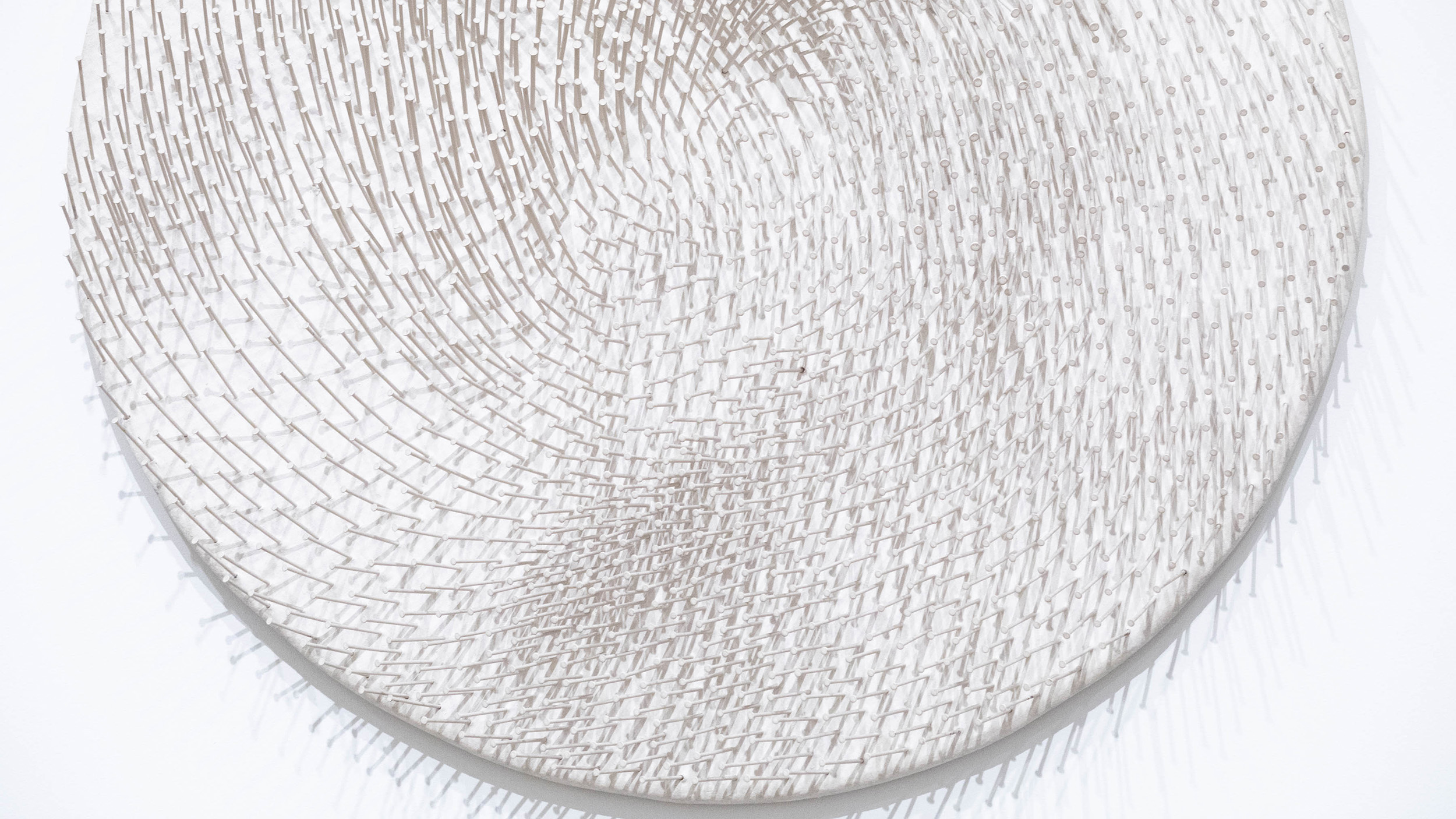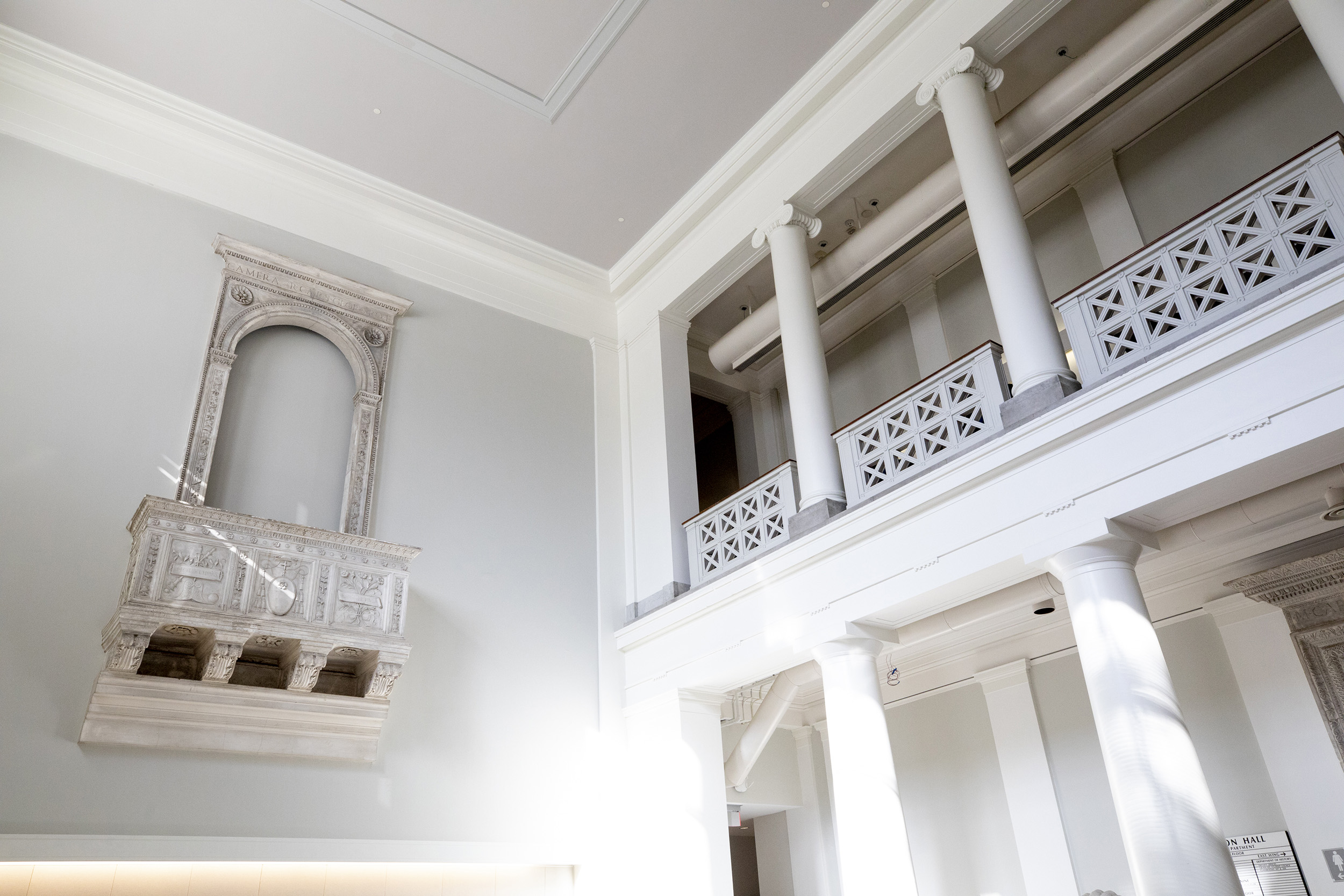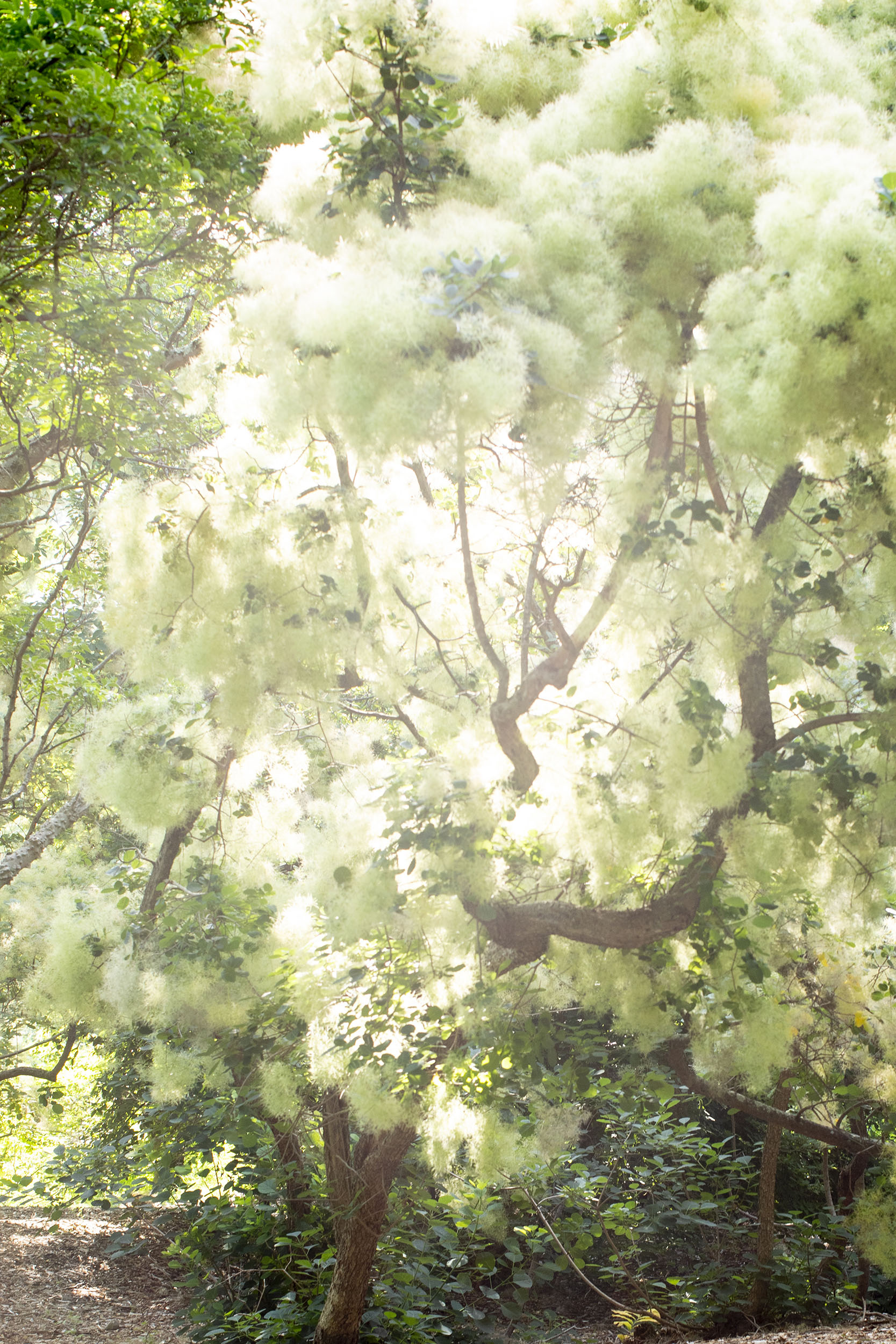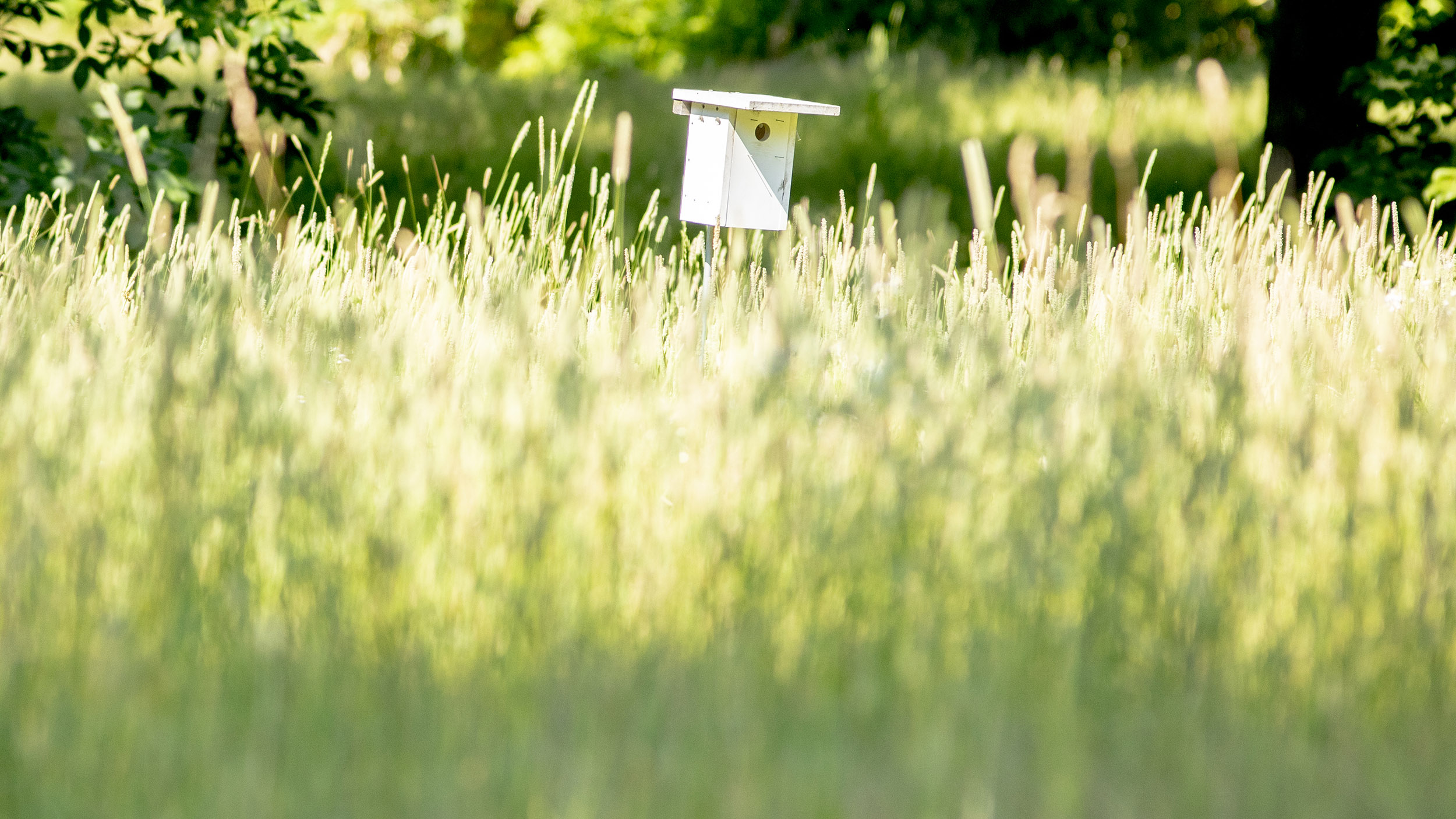Simple brilliance

Detail of Günther Uecker’s “Spiral White, 1963“ (1985.23) at Harvard Art Museums.
Photos by Rose Lincoln/Harvard Staff Photographer
Light and bright moments on campus
In the summertime the days lengthen, the landscape brightens, and the sun bleaches what was fair to brilliant white, calling to mind crisp sheets on a clothesline, billowy clouds, or a crisp culinary uniform. At Harvard’s Arnold Arboretum, it’s timothy sprouting up among the meadow grass. According to horticulturist Brendan Keegan, the European species “was unintentionally introduced into New England by European settlers. During the 1800s, it was widely planted as a fodder and hay plant for livestock. It comes up all over the Arboretum when we do not mow the grass, which reflects the agricultural history of this landscape. The nest box in the photo provides nesting habitat primarily for tree swallows and bluebirds. These two species thrive in grassy open areas.” The tree swallows that used the box this year are gone now. They may be back when the time returns to take to greener pastures.





A bike in Harvard Yard; a wall of windows at the Graduate School of Design.




The bark of a birch (Betula) at Arnold Arboretum. Native Americans in New England cut away the bark of paper birches (B. papyrifera) to build canoes. A smoke tree (Cotinus coggygria) at the Arboretum gets it common name from the wispy hairs that extend from spent flowers once they finish blooming. The flowers themselves are teeny, bloom in the spring, and are easy to overlook. This species is native from southern Europe into Eurasia and China.








